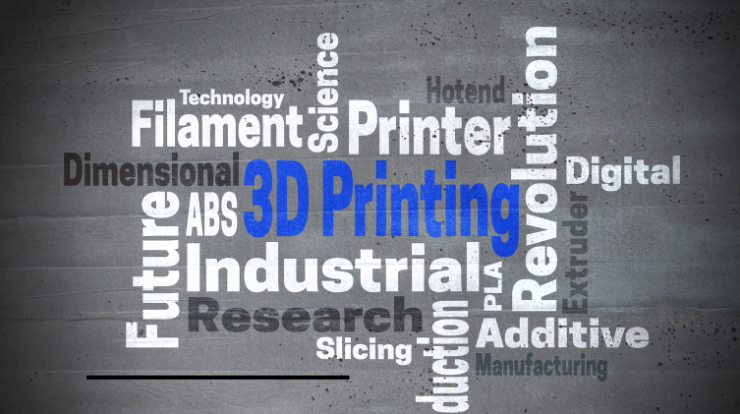Intricate designs and complex geometries pose unique challenges for traditional manufacturing methods, often requiring expensive tooling and multiple assembly steps.
However, 3D printing has emerged as a revolutionary technology capable of handling such complexities with ease. In this comprehensive guide, we will explore how 3D printers manage intricate designs and complex geometries, covering various techniques, considerations, and applications.
Design Optimization
1. Design for Additive Manufacturing (DfAM)
- Topology Optimization: DfAM involves optimizing designs specifically for additive manufacturing, leveraging the inherent capabilities of 3D printing to reduce material usage and improve structural integrity. Topology optimization algorithms generate complex lattice structures and organic shapes, which can only be realized through additive manufacturing.
- Generative Design: Generative design algorithms explore numerous design iterations based on specified constraints and objectives, resulting in innovative geometries optimized for strength, weight, and functionality. 3D printers excel at translating these complex generative designs into physical objects without the constraints of traditional manufacturing processes.
Printing Techniques
2. Support Structures
- Automatic Supports: Many 3D printing technologies, such as SLA and FDM, automatically generate support structures for overhangs and complex features during the printing process. These supports provide temporary scaffolding to prevent drooping or collapsing of unsupported regions.
- Dissolvable Supports: Some 3D printers utilize dissolvable support materials that can be easily removed after printing, leaving behind intricate geometries with smooth surfaces. This approach is particularly useful for complex designs with internal channels or enclosed cavities.
3. Layer-by-Layer Construction
- Incremental Building: 3D printers construct objects layer by layer, enabling the fabrication of complex geometries with intricate details. Each layer is deposited or solidified based on the digital design, allowing for precise control over the geometry and resolution of the final part.
- Variable Layer Heights: Advanced 3D printing systems offer variable layer height capabilities, allowing for finer details in areas that require high resolution and faster build times in less critical regions. This adaptive approach optimizes printing parameters for each section of the design, ensuring both accuracy and efficiency.
Material Considerations
4. Multi-Material Printing
- Simultaneous Deposition: Some 3D printers support multi-material printing, enabling the simultaneous deposition of multiple materials within the same layer. This capability allows for the creation of complex assemblies, functional gradients, and hybrid structures with varying material properties.
- Material Compatibility: Careful selection of compatible materials is essential when printing intricate designs with multiple components or interfaces. Understanding the material properties, such as adhesion, shrinkage, and thermal characteristics, ensures successful fabrication of complex geometries without compromising structural integrity.
5. Advanced Materials
- High-Performance Polymers: Specialized filaments and resins, such as carbon fiber-reinforced polymers and engineering-grade thermoplastics, offer enhanced mechanical properties and durability, making them suitable for demanding applications that require intricate designs and complex geometries.
- Metal Additive Manufacturing: Metal 3D printing technologies, such as selective laser melting (SLM) and electron beam melting (EBM), enable the fabrication of intricate metal parts with complex internal structures and optimized geometries. These methods are particularly valuable in aerospace, automotive, and medical industries for producing lightweight components with high strength-to-weight ratios.
Post-Processing Techniques
6. Surface Finishing
- Abrasive Finishing: Sanding, polishing, and bead blasting are common techniques used to improve the surface finish of 3D printed parts, removing layer lines and imperfections to achieve a smooth, uniform appearance.
- Chemical Smoothing: Chemical smoothing involves exposing printed parts to vapor or liquid solutions that dissolve the outer layer of material, resulting in a glossy, polished surface finish. This process is especially effective for resin-based 3D prints produced by SLA or DLP technologies.
7. Support Removal
- Manual Removal: For FDM prints, support structures are typically removed manually using tools like pliers or flush cutters. Careful post-processing is required to minimize damage to delicate features and preserve the integrity of the design.
- Water-Soluble Supports: Some 3D printing materials, such as PVA (polyvinyl alcohol), can be dissolved in water, allowing for easy removal of support structures without manual intervention. This approach is ideal for complex designs with intricate internal cavities or enclosed spaces.
Applications and Case Studies
8. Architecture and Art
- Complex Structures: 3D printing enables architects and artists to create intricate architectural models, sculptures, and installations with unprecedented levels of detail and complexity. From intricate facades to organic sculptures, additive manufacturing offers limitless creative possibilities.
9. Biomedical Engineering
- Patient-Specific Implants: Medical professionals leverage 3D printing to fabricate patient-specific implants, prosthetics, and surgical guides tailored to individual anatomies. Complex geometries and intricate internal structures can be precisely replicated to optimize fit, function, and patient outcomes.
10. Aerospace and Automotive
- Lightweight Components: In aerospace and automotive industries, lightweighting is crucial for improving fuel efficiency and performance. 3D printing enables the production of intricate lattice structures and complex geometries that reduce weight without compromising strength or durability.
Conclusion
In conclusion, 3D printing has revolutionized the fabrication of intricate designs and complex geometries across various industries, offering unparalleled design freedom, precision, and efficiency.
By leveraging advanced printing techniques, materials, and post-processing methods, manufacturers and designers can realize their most ambitious ideas and push the boundaries of what is possible with additive manufacturing. As technology continues to evolve, we can expect further innovations that will expand the capabilities of 3D printing and unlock new opportunities for creativity and innovation.



